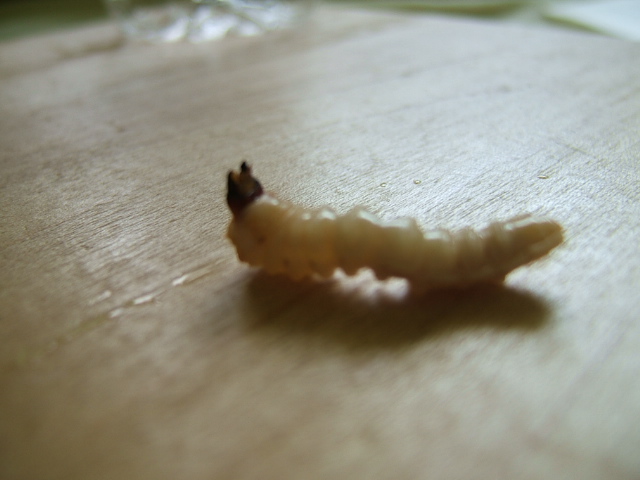Question
I am getting several old pecan trees to mill, probably 36" + DBH. My mill can practically saw 22 inch wide boards (52 inch circle mill), but since this is pecan, I am wondering whether this is practical, as to drying and possible checking? Perhaps I should board it into 12 inch wide 5/4 material and stack it out?
Forum Responses
(Sawing and Drying Forum)
From contributor T:
I'm eager to read responses to the intricacies of sawing/drying pecan, as there is an old orchard being plowed down and burnt up in the name of progress, but I understand the wood to be quite finicky compared to other hardwoods. Anybody with info please chime in.
I am sure that there are ways to reduce warp, and I think I'll do better the next time. One of my errors this time was likely sticker spacing. I placed stickers at 2 ft intervals. Next time, I'll go with 1 ft intervals. Although I had in excess of 300 lbs on top of the stack, I may increase the weight as well. I feel this may have been too light, as the boards were about 12 feet long.
Comment from contributor A:
One note if making pecan flooring: use a commercial mill with flooring experience and good, heavy stickering machines. I recommend against trying to diy the tongue and groove work with a router table or other home workshop tools. The tongue and the bottom projection interlocking with the tongue both need to be milled 1/16" short. This assures the top joint will meet exactly with the facing board, without interference from tongue swelling or debris at the subfloor. Also, pecan flooring boards will lay better, if they are kerfed lengthwise to about 20% of board thickness at 1/2" to 3/4" intervals (avoiding the tongue and groove zone). This avoids cupping. The mill can do the kerfing in the stickering operation, usually at no added cost. This system has worked very well over about 60,000 SF of flooring produced so far.
From the original questioner:
I thought I was the only one who had the warping problem. I have read on another forum the problems with pecan, which can be difficult to work with. I was also considering a lot of weight, but then you wonder how much? I have some pecan boards that were milled over a year ago and are 24 inches wide (from a bandmill), and they will have to be ripped. I even had the cut from the center of the tree for the purpose of making a table top with only 2 boards, since I have seen them made that way, but I don't think I will get them out of those boards. More advice needed.
From contributor B:
I quarter/rift saw all the pecan I am forced to saw. You will get less warp, twist, etc. that way.
From contributor J:
Quartersaw and lots of weight. Worth repeating, lots of weight. I have over 1000lbs on top of my small pile. Where are you located?
From contributor T:
I'm in central GA. Does pecan need to air dry more slowly than GA summers will allow?
From contributor M:
I have plain-sawn all the pecan I worked with. I think when I am pulling the stack down, I'll pay special attention to the q'sawn vs. flat sawn to see if that makes a difference. If so, it would only require a little extra work to q'saw a greater proportion of the log. That may be another tool to put in the tool bag for pecan.
From contributor J:
I would recommend drying it quickly. Your problem may be the humidity in GA and drying too slowly. The sapwood with turn gray if you dry too slowly. It is much nicer looking white. If you have a kiln locally, I'd dry it there. If not, sticker it in an open shed and running a fan to circulate the air through the pile. Bring it below 20% as quickly as possible. Oh yeah, don't forget – lots of weight!
From Professor Gene Wengert, forum technical advisor:
Orchard pecan and open-grown pecan is very prone to warping. Weighting and fast drying are the best options, but do not expect total control. Weighting is typically about 150 pounds per square foot.
From contributor J:
Hey Doc, does that imply that forest grown trees are less prone to warping? Also, wouldn't forest grown have less sapwood to deal with, thus less potential loss from slow drying?
From Professor Gene Wengert, forum technical advisor:
Yes, that is *generally* true.
The comments below were added after this Forum discussion was archived as a Knowledge Base article (add your comment).
I farm and often saw (bandsaw mill) pecan orchard hardwood for 3/4-inch tongue and groove flooring and cabinet lumber. In central California we have summer temperatures over 105 degrees with humidity below 10%, so I can usually air dry fairly easily. I do so in an open shed, and I use a fan, if no cross-wind is present. I gave up relying on weight to hold stacks against warpage. Even using great weight I experienced too low a yield due to warpage and twist. I bought a banding tool and now I very tightly band the boards into bundles of a dozen or so boards with 1/2-inch steel bands at 24" intervals. I use a sticker interval of 12". I band when green-sawn, and then I have to re-band about three weeks later, due to shrinkage and band loosening. Yes, this is very work-intensive and expensive, but it works dependably. I can usually get about 85-90% usable yield from lumber cut to planing dimensions as green timber.
